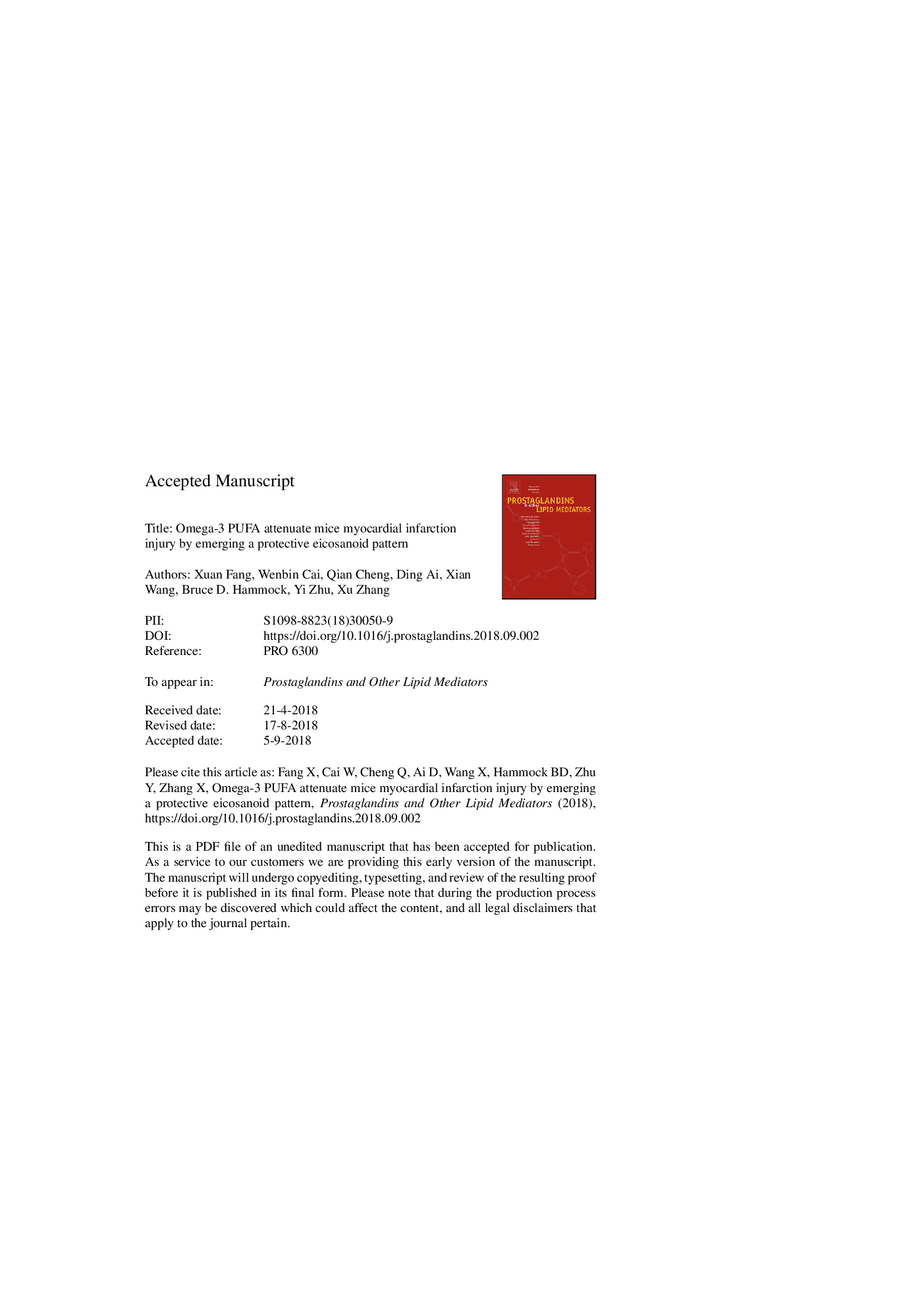| Article ID | Journal | Published Year | Pages | File Type |
|---|---|---|---|---|
| 11026013 | Prostaglandins & Other Lipid Mediators | 2018 | 19 Pages |
Abstract
Omega-3 polyunsaturated fatty acid (n-3 PUFA) supplementation is a recommended preventive approach against cardiovascular diseases, but its mechanism of protection against myocardial infarction (MI) injury is not fully understood. Eicosanoid metabolomics demonstrated an abnormal eicosanoid profile was in the plasma of mice receiving MI surgery. 19,20-EDP, 17,18-EEQ, 14,15-EET and 9,10-EpOME were decreased, and PGE2 was increased by the surgery. N-3 PUFA-rich diets feeding or transgene of Fat-1 shifted the eicosanoid profile to an n-3 PUFA dominant style and attenuated the myocardial infarction injury. Multiple logistic regression analysis suggested the degree of MI injury was related with an eicosanoid pattern, composed by eicosanoids derived from both n-3 and n-6 PUFA in the three enzymatic pathways. These results suggested the benefits of n-3 PUFA on MI was achieved synergistically.
Related Topics
Life Sciences
Biochemistry, Genetics and Molecular Biology
Biochemistry
Authors
Xuan Fang, Wenbin Cai, Qian Cheng, Ding Ai, Xian Wang, Bruce D. Hammock, Yi Zhu, Xu Zhang,
